Running the Summary Dashboard report
The Summary Dashboard report is a new addition to the three standard reports that are already available for surveys in Snap XMP Desktop: Questionnaire, Summary and Summary Tables. The Summary Dashboard report generates an HTML summary report showing images of a chart, table or list for all relevant questions. These are displayed in a double column format. This report is available for surveys created using Snap XMP Desktop build 12.10 and after.
To find more information on all the standard reports, see The standard reports.
Executing the Summary Dashboard report
- Click Reports
 on the toolbar to open the Reports window.
on the toolbar to open the Reports window.
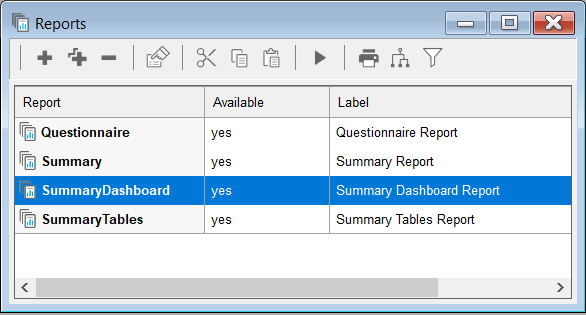
- Select the Summary Dashboard report in the Reports window.
- Click the Execute
 button on the Reports window toolbar to run the report. This opens the Report Execution dialog showing the report selected in the window title.
button on the Reports window toolbar to run the report. This opens the Report Execution dialog showing the report selected in the window title.
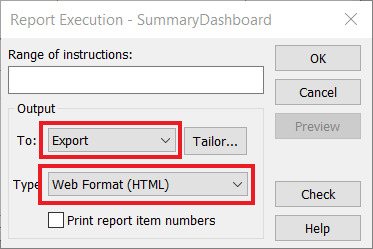
- In To, select Export as the output type. This exports the report to a file.
- In Type, select the file type as Web Format (HTML).
- Tailor allows you to set the file details for the exported report
- Click OK to export the report. This opens the Export file details dialog.
- Enter the file name giving the location where the HTML file saves.
- Enter the file numbering, output method, encoding and sizing for the export file.
- Click OK to export the file.
- From the file location, open the file. The report opens in a web browser displayed in a two-column layout. Each chart or table image can be saved as an image file to be used elsewhere. (This may depend on the web browser used.)
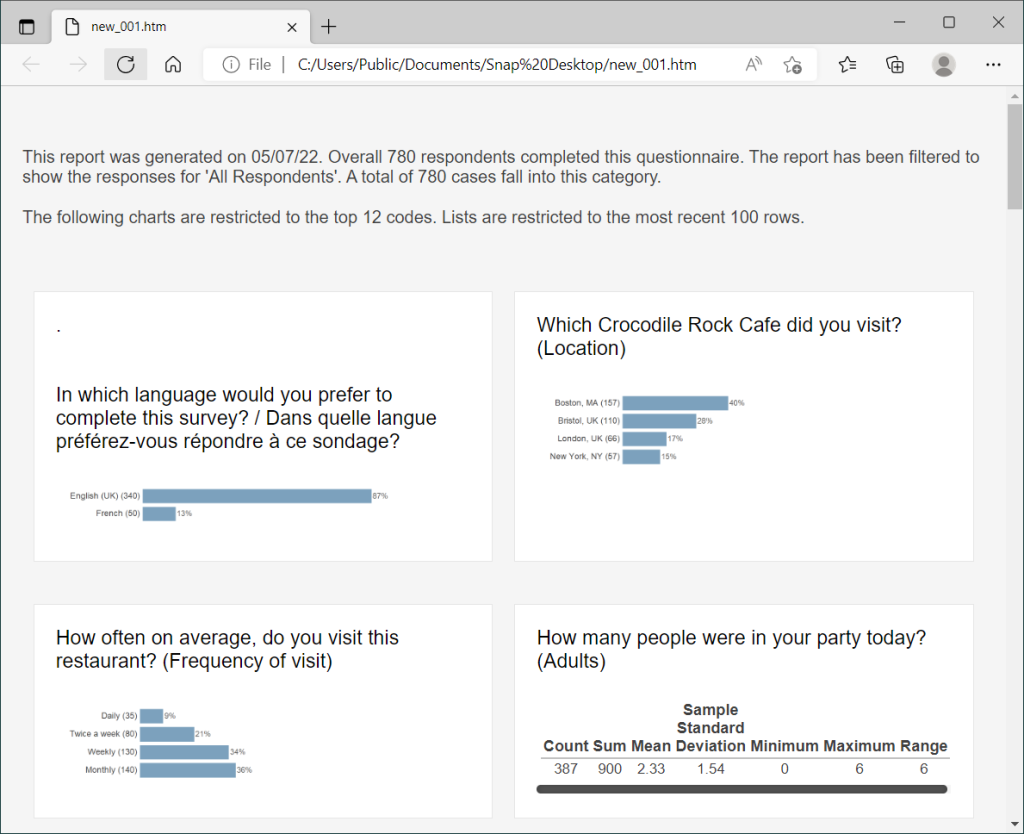
Changing the standard Summary Dashboard report
You can change the content of the Summary Dashboard report.
- Click Reports
 on the Snap XMP Desktop toolbar to open the Reports window.
on the Snap XMP Desktop toolbar to open the Reports window. - In the Reports window, double-click on the Summary Dashboard report to open it. It consists of five instructions. There are three instructions laying the report out, an Information instruction giving the title and a brief description, and a Summary Report instruction.
- Double-click the Information instruction to open it. You can change the default description.
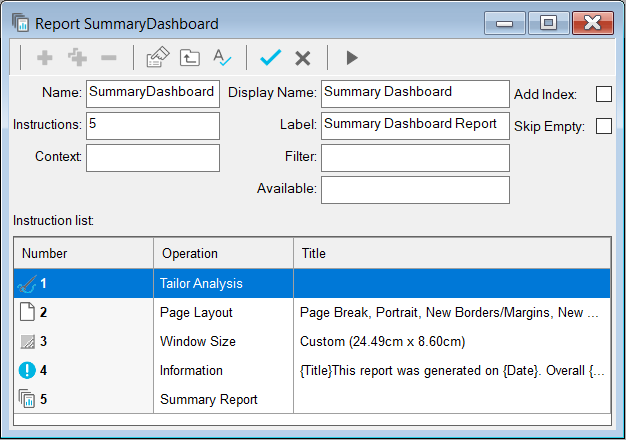
- Double-click the Summary Report instruction to open it.
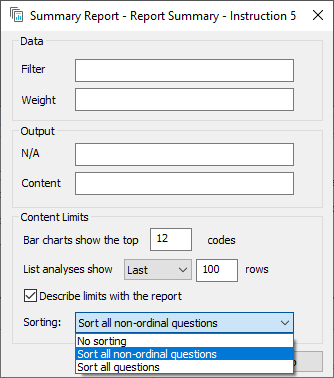
- Specify a Filter to restrict the data used in the report.
- In the N/A box enter a logical expression that refers to a table cell or context value and for which the report is not applicable. You can use this to test if an analysis is empty. For example, if you have an analysis of visitors AN1, you can use the condition AN1 empty. This would only build the report if there were visitors.
- In the Content box enter the variables that you wish to include. If the field is left blank, all the question variables will be included. You can include paradata and derived variables in the list.
- Click OK to save your changes.
- Click Execute
 on the Report toolbar to run the report.
on the Report toolbar to run the report.